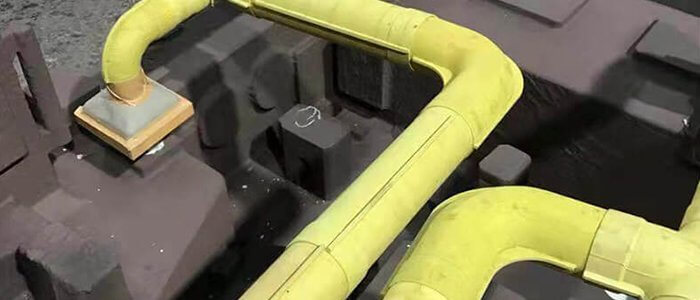Introduction
The lost die casting industry, also known as lost foam casting or evaporative pattern casting, is a lesser-known but highly versatile and efficient method of manufacturing complex metal parts. Unlike conventional die casting, lost die casting involves the use of a foam pattern that evaporates during the casting process. This innovative technique offers a range of advantages and finds applications across various industries.
Advantages of Lost Die Casting
Complex Geometries:
One of the primary advantages of lost die casting is its ability to create intricate and complex parts with ease. The foam patterns can be shaped into highly detailed and intricate designs, making it ideal for components with intricate features, undercuts, and fine details.
Reduced Tooling Costs:
Traditional die casting requires expensive molds or tooling, which can add significant upfront costs to the production process. In contrast, lost die casting reduces tooling expenses since it relies on low-cost foam patterns that can be easily shaped and modified.
Lightweight Components:
It is well-suited for producing lightweight parts. The foam patterns used are lightweight and easily manipulated, making it possible to create parts with complex hollow structures or internal cavities, reducing the overall weight of the final product.
Material Versatility:
It can be applied to a wide range of metals and alloys, including aluminum, zinc, and magnesium. This versatility allows manufacturers to select the best material for the intended application, ensuring the desired properties and performance.
Minimal Draft Requirements:
Traditional die casting often requires draft angles to facilitate the ejection of parts from the mold. Lost die casting allows for minimal or no draft requirements, saving material and simplifying the design of components.
Reduced Waste:
The lost die-casting process produces minimal waste since the foam patterns are the only material lost in the process. This makes it an environmentally friendly and cost-effective manufacturing method.
Applications of Lost Die Casting
Automotive Industry:
The automotive industry extensively employs lost die casting for producing various components such as engine blocks, cylinder heads, transmission cases, and intake manifolds. The method’s ability to create lightweight and complex parts is particularly advantageous in this sector.
Aerospace Industry:
Lost die casting is used in the aerospace industry to produce lightweight and high-strength components like aircraft engine parts, airframe components, and various structural elements. The technique’s ability to manufacture parts with intricate geometries is crucial for aerospace applications.
Marine Industry:
It is applied in the production of marine components, including propellers, engine components, and structural parts. Its versatility in working with different materials ensures the desired performance in marine environments.
Electrical and Electronics:
Components in the electrical and electronics industry, such as heat sinks, housings, and connectors, benefit from the lightweight and intricate design capabilities of lost die casting.
General Manufacturing:
The versatility of lost die casting extends to various manufacturing sectors, including industrial machinery, consumer goods, and medical devices, where complex components with high precision are required.
Conclusion
The lost die casting industry represents a dynamic and adaptable manufacturing process that offers numerous advantages over traditional die casting methods. Its ability to create complex, lightweight, and intricate parts with reduced tooling costs makes it a valuable choice for various applications. From automotive and aerospace to marine, electrical, and general manufacturing, it plays a crucial role in producing high-quality components for a wide range of industries. As technology continues to advance, the lost die casting industry will likely grow and evolve to meet the demands of modern manufacturing.
Using ceramic foam filters in lost foam casting, also known as the evaporative pattern casting process, is a technique employed to ensure that the final cast product is free from impurities and defects. Ceramic foam filters help eliminate unwanted particles and gases while maintaining the quality of the metal casting.


